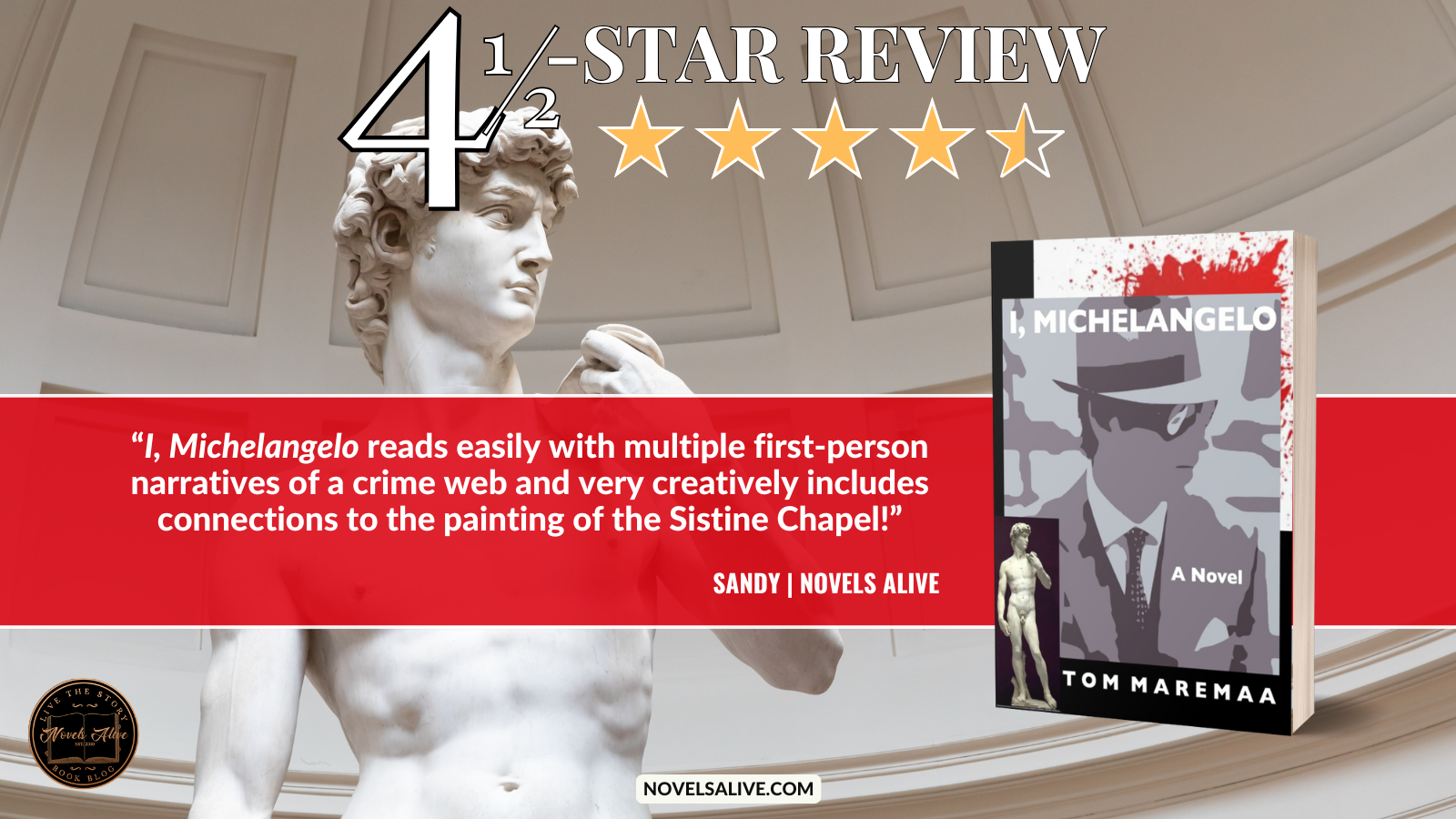

Publication Date: August 9, 2024
History runs in parallel in this work of post-modern fiction, repeating itself in the broken mirror of time.
In one mirror of time, we meet the great young artist and sculptor of the sixteenth century, Michelangelo, whose struggles with his family and Pope Julius II turn his life upside down while creating the monumental statue of David and painting the masterful, immortal frescoes of the Sistine Chapel. In another, we encounter the artist and enforcer of a criminal enterprise in the netherworld of the twenty-first century, also named Michelangelo, the most unlikely of anti-heroes. His fight against a rival criminal enterprise takes center stage in the story, which is told from more than a dozen different points of view.
Michelangelo’s take down the creator of a dark website called Yellow Brick Road. The creator, known by the code name of IDAHO, is a fathom figure. Nobody is sure if he or she is one or many people, or where the enterprise resides geographically. The stakes are high as Idaho always seems one step ahead of Michelangelo and is able to wreak havoc violently on Michelangelo’s life and family. Who will prevail? And at what cost?
All the while our brave anti-hero, a former middle-school teacher of art and music, is struggling to initiate his young, rebellious sixteen-year-old son Gio into the rites and duties of manhood. Father and son are seemingly always at odds, despite the profound love they share for each other.
We enter the netherworld of the Big Apple at the dawn of the present century when the Internet is just beginning to gain traction; Amazon is only selling books online. And the country is still basking in the glow of innocence and naivete as a new, youngish president has taken office. But in that netherworld, the Dark Web has already emerged in full force with dire consequences. Will justice be served? And if so, by what means?

Author Tom Maremaa has journeyed to create I, Michelangelo. As a young boy, he visited Florence, Italy, and was drawn to the city created by artists and artisans. It never left him. Maremaa read biographies of Michelangelo and started to make connections between that man’s struggles to create art and to navigate a relationship with his own father and the papal father, Pope Julius II and how those themes of the want of connection can ring true now.
I am fascinated by authors who speak to the experience of the novel telling itself in their minds and hearts. Maremaa states his novel propelled itself. He had never written a book from so many points of view, but this is how it was “spoken” to him. So, I, Michelangelo, is told from multiple viewpoints and intertwines the life of Michelangelo as he paints the Sistine Chapel and Michelangelo, a modern man who struggles to find a way to care for his son after the tragic loss of his wife.
This novel is very much a crime-show-told-story. Each chapter is told by a character in their own voice. The author does such a good job keeping the vocabulary simple, as though these are truly words spoken and not contrived and written. I could hear the voices in my head as I read, each distinctively different.
Most of the novel follows Michelangelo Di’Antonio as he explains how he came to a life of crime after beginning as a middle school opera and art teacher. He is planning a bonding trip with his 16-year-old son, but an opportunity comes for him to facilitate a reckoning that may be too much and may threaten those he loves. However, the parameters within the crime world are shifty. In and out of this narrative are scenes of related struggles as Pope Julius makes demands of the artist Michelangelo in the 1500s during two different political climates.
Combining both Michelangelo’s doesn’t always seem clear, but in reading the author’s notes, the comparatives made sense.
As the end of the novel approaches, maybe the modern Michelangelo will finally rebuild his life and find justice, love, and parental respect. But then…he didn’t see it coming—no one did!
I, Michelangelo reads easily with multiple first-person narratives of a crime web and very creatively includes connections to the painting of the Sistine Chapel! 

 Tom Maremaa is the author of 18 novels, most recently I, MICHELANGELO. His novel METAL HEADS from Kunati Books was nominated by the American Library Association (ALA) as one of the Notable Books of 2009. He has also authored short fiction, plays, and works of non-fiction. A graduate of Dartmouth College, he studied languages, literature and philosophy at the University of Zurich, Switzerland, and worked on his Ph.D in comparative literature at the University of California, Berkeley. He lives with his wife in Mountain View, California, and works as a software engineer in Silicon Valley. He travels widely to learn about and understand as many cultures and languages as he can.
Tom Maremaa is the author of 18 novels, most recently I, MICHELANGELO. His novel METAL HEADS from Kunati Books was nominated by the American Library Association (ALA) as one of the Notable Books of 2009. He has also authored short fiction, plays, and works of non-fiction. A graduate of Dartmouth College, he studied languages, literature and philosophy at the University of Zurich, Switzerland, and worked on his Ph.D in comparative literature at the University of California, Berkeley. He lives with his wife in Mountain View, California, and works as a software engineer in Silicon Valley. He travels widely to learn about and understand as many cultures and languages as he can.












